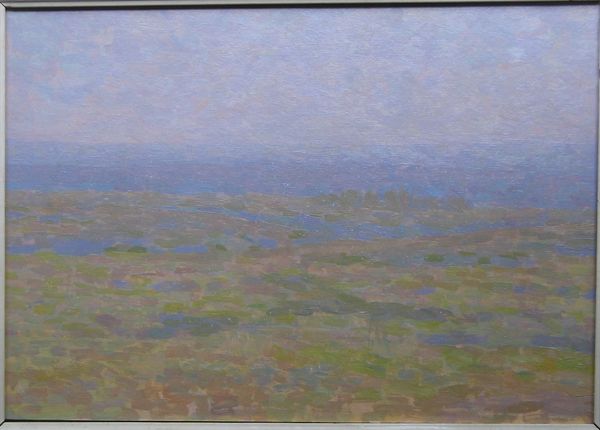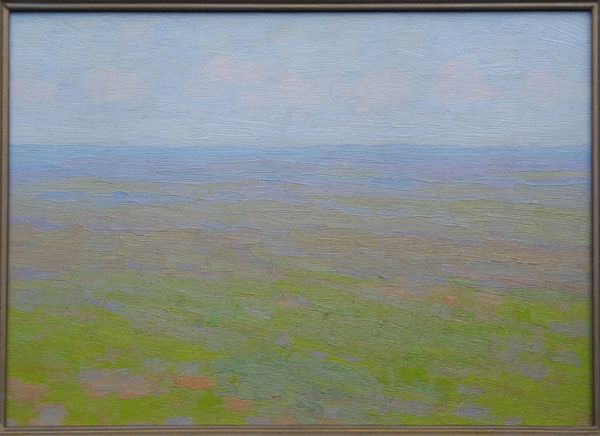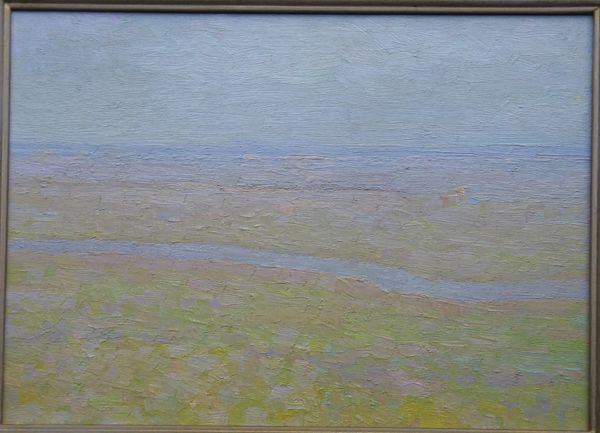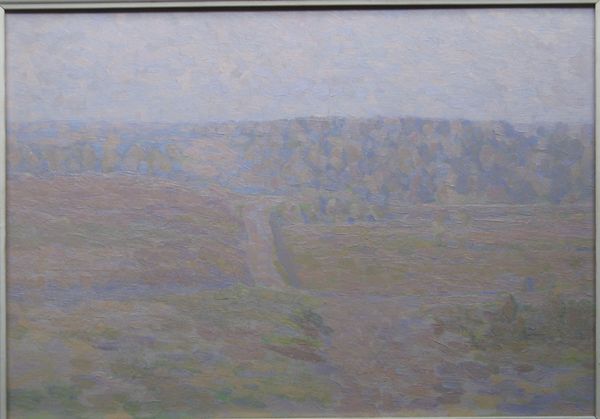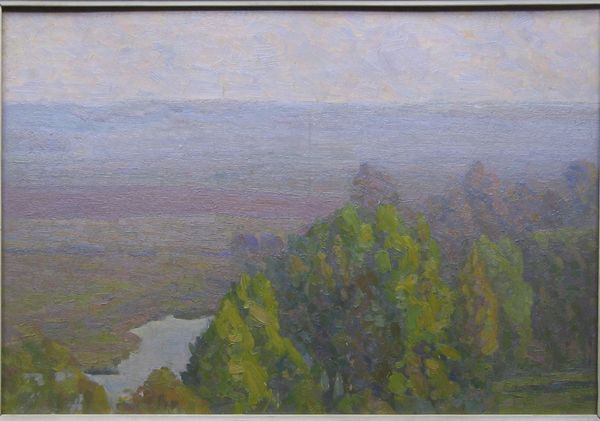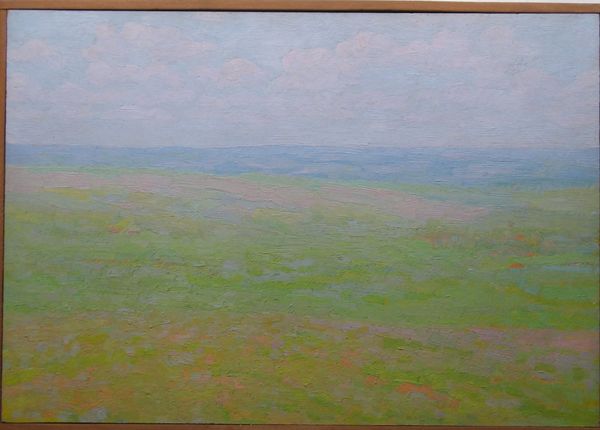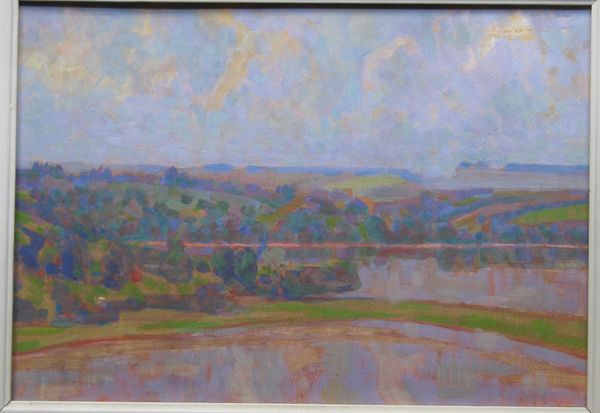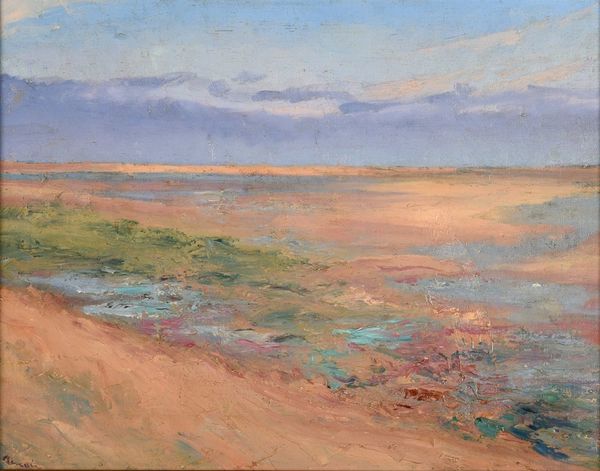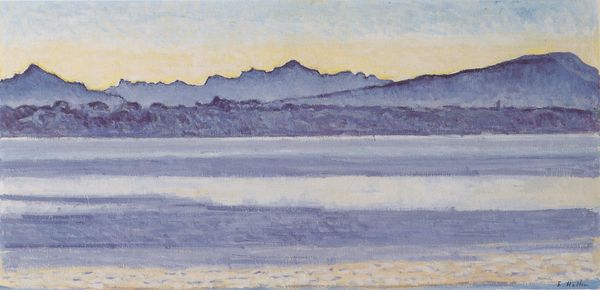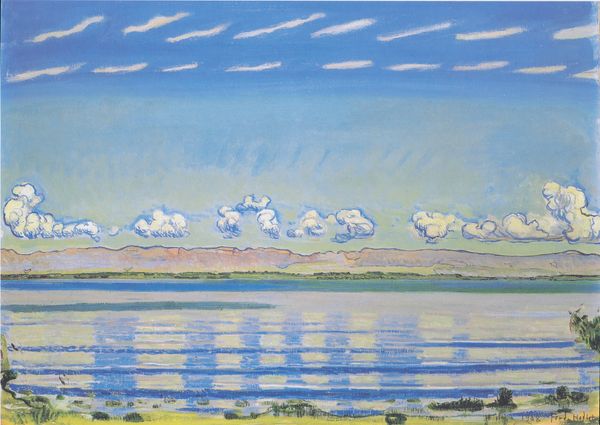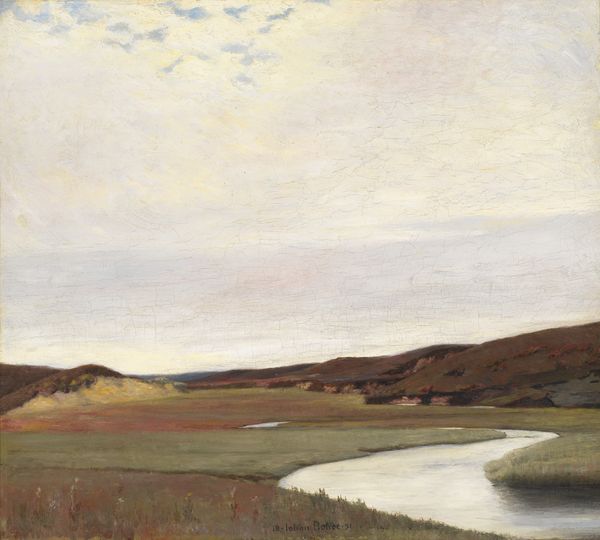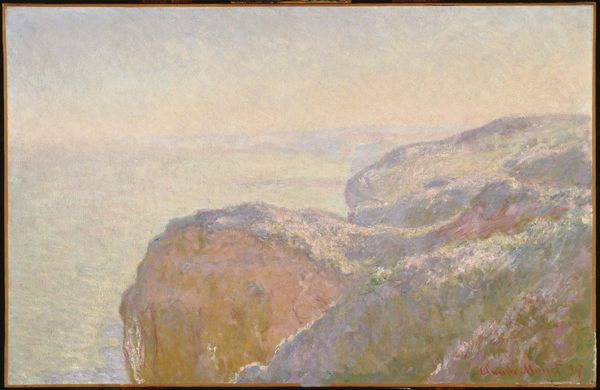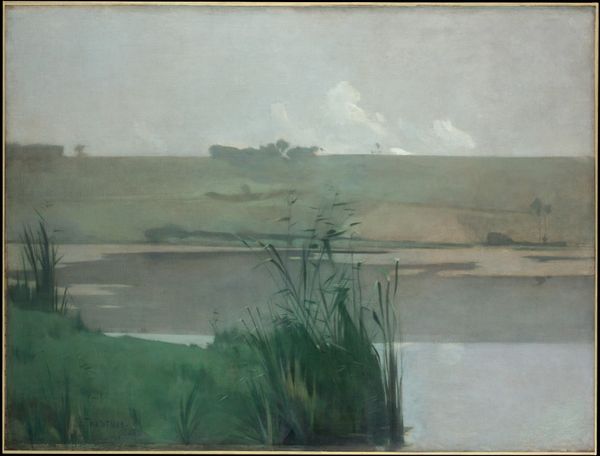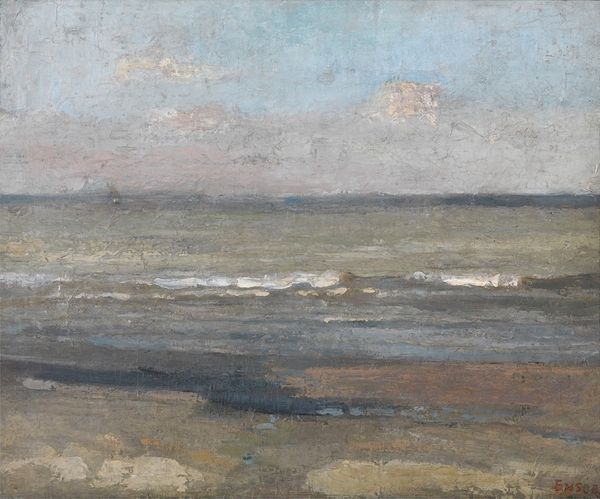
painting, oil-paint
#
painting
#
canvas painting
#
oil-paint
#
landscape
#
impressionist landscape
#
possibly oil pastel
#
acrylic on canvas
#
modernism
#
realism
Copyright: Hryhorii Havrylenko,Fair Use
Curator: This is Hryhorii Havrylenko’s "Novhorod-Siverskyi," painted in 1974. He employed oil on canvas to capture this scene, which now resides here at the National Art Museum of Ukraine. Editor: Immediately, I am struck by the sheer tranquility. The hazy, almost muted colors evoke a sense of quiet contemplation, like looking at a distant memory. Curator: The painting style is heavily influenced by both realism and elements of modernism. Notice how Havrylenko doesn't attempt to perfectly replicate reality. He simplifies shapes and blends colors to create an atmosphere. This technique seems almost impressionistic, but with a firmer structure, retaining a core of recognizable forms. The cliffs overlooking the water are beautifully abstracted, aren't they? Editor: Indeed. And, to me, there’s something subtly defiant in depicting such a peaceful scene in 1974, during the height of Soviet rule. These kinds of images allowed an emphasis on a regional or local identity in visual terms without promoting outright nationalist political gestures. Perhaps the soft light of the scene recalls a yearning for a shared, less politicized sense of place. Curator: Absolutely. Landscapes in Ukrainian art often carry a deep symbolic weight. They connect people to their homeland and cultural history. The symbolism embedded within these representations runs counter to official narratives, as it reinforces alternative viewpoints, a powerful gesture of silent resistance. The image evokes earlier memories, acting almost as a mnemonic device. Editor: It makes me wonder, how does this representation of the land compare to officially sanctioned landscapes of the time? Is there an element of romanticism here, looking back at a pre-Soviet past through the colors, forms and imagery utilized? This artist reminds me a bit of Symbolist landscapes. Curator: There's a poignant continuity at play, and yet, in the vagueness, also an emphasis on forgetting. Havrylenko subtly calls into question dominant historical and cultural narratives by reminding people of a deeply felt, shared visual memory of their region. Editor: That’s a really incisive way to put it. Seeing it through that lens transforms the initially tranquil image into something far more profound and urgent. Curator: Ultimately, Havrylenko encourages us to think about what it means to create an artwork rooted in place but liberated from strict realism, capable of echoing far beyond its visual dimensions. Editor: Yes, it demonstrates how art can quietly push against the structures around it, a very beautiful way to see the emotional complexities captured within.
Comments
No comments
Be the first to comment and join the conversation on the ultimate creative platform.
